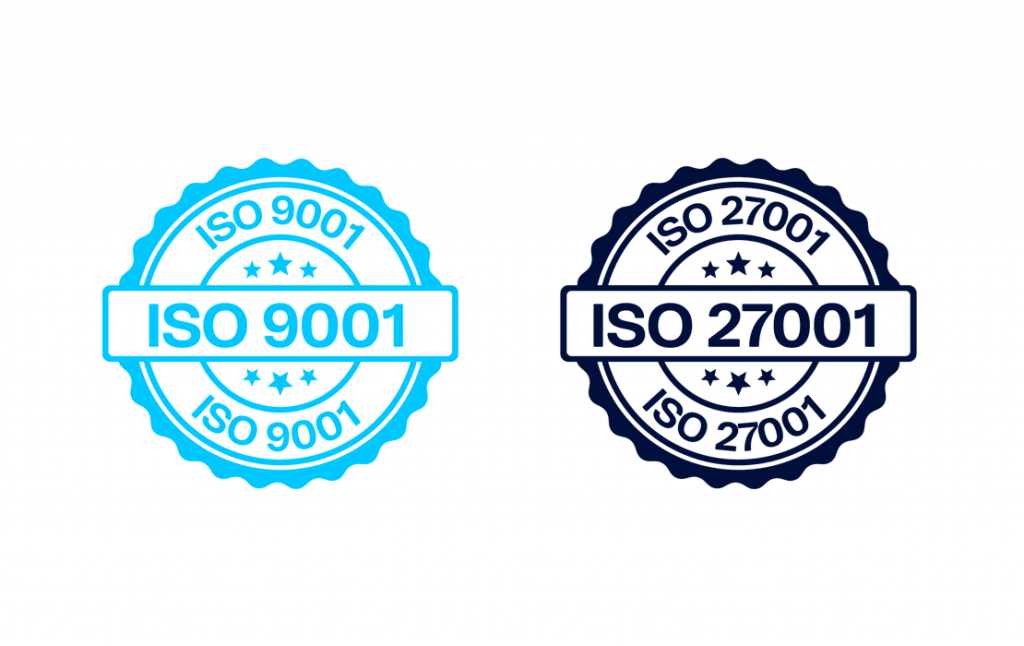Grundfos: Pioneering Water-as-a-Service Solutions through IoT
Through a highly collaborative partnership with Telenor Connexion, Grundfos is leveraging IoT technology as an enabler to help improve water management and reduce energy consumption, as well as other optimizations. Read on to learn how they did it.
Executive Summary
More and more companies are turning to IoT to capture the benefits of connecting their products and services. An IoT implementation strategy and key objectives must be identified to be successful. This can be challenging for any business, particularly global enterprises with a complex and decentralized structure.
Grundfos is one of the world’s leading pump manufacturers. Its digital transformation journey is as unique as it is impressive: a 75-year-old company shifting from selling water pumps in boxes to delivering water-as-a-service, all connected by IoT. Sustainability has been at the core of everything Grundfos does since its creation and it continues to be a top priority today.
Back in May 2017, Grundfos announced an ambitious goal to carry out the smartest digital transformation of any industrial company. Achieving this would not only greatly improve water and energy efficiency, but also contribute to social good.
To get there, Grundfos needed to move away from exclusively selling pumps to providing water-as-a- service. In just three years, the first phase of Grundfos’ digital transformation has been a success with the commercial launch of condition monitoring, energy management of buildings and water management in water networks as well as a number of IoT digital pilots in the pipeline.
Background
Grundfos purpose is to pioneer solutions that help overcome the world´s water and climate challenges. The company aims to improve quality of life for people by, for example, contributing to improve water access for 300 million people in need by 2030.
To achieve these goals, it started its digital transformation journey in 2017 in order to help tackle the world’s water and climate challenges. The company has driven its transformation to the extent that its business goes beyond simply selling pumps as products and now encompasses providing pumps as-a-service. The ultimate vision is to supply water as-a-service, selling the service of moving water.
Our goal is to improve the quality of life for people worldwide by delivering water-as-a-service.
Fredrik Östbyeformerly the Head of Digital Transformation at Grundfos
Grundfos produces approximately 18 million pumps each year for customers in more than 55 countries. However, energy consumption by electrical pumps is high, accounting for about 10% of total world electricity consumption, and there are still many markets that don’t have access to pumps which are vital to enabling supplies of clean water.
Water-as-a-Service Business Model
The “as-a-service” business model is built on the idea that products can become valuable services. These services, often connected by IoT, produce results that are usually much more sustainable than traditional product businesses.
For Grundfos, the move to offer connected water pumps and goal to offer water-as-a-service means that rather than only focusing on selling pump units or systems, it is also focused on the results that the water solutions enable. Connectivity enables Grundfos to offer the pumps and solutions as a vehicle for services that can go on to help generate solutions to complex water related challenges.
Global Connectivity and Knowhow from Telenor Connexion
To help reach its sustainability and transformation goals, Grundfos approached Telenor Connexion to connect its water management pumps. Telenor Connexion supplies Grundfos with global managed IoT connectivity which enables Grundfos to provide condition monitoring, energy management of buildings, and water management in water networks, primarily in Europe with plans to rollout the service in Asia and the US. In addition, connectivity is used across a number of important R&D internal digital projects. In the near future, the plan is to take some of these projects to the market. Using Telenor Connexion’s managed connectivity, Grundfos and its customers will be able to access hundreds of reliable mobile networks across the world.
Global coverage, local expertise in key markets and an innovative mindset are some of the reasons we have selected Telenor Connexion as partners. Maximizing ease of connectivity for our customers is a top priority, which this partnership greatly enhances.
Mads NipperCEO of Grundfos until 2020
The Sustainability Challenge
Facts related to water
- As of Feb 2021, 2.1bn people lack access to safe drinking water
- 40% of global energy consumption comes from buildings
- 30% of global water production leaks out from water networks
- 70% of global water consumption comes from agriculture
Source: World Health Organization
Driving the Grundfos team towards sustainability efforts
Grundfos is committed to helping organizations across the world increase water efficiency, improve water management and ultimately contribute to overcoming fresh water supply limitations. At the same time it aims to increase cost efficiency both in its own operations and for customers. In terms of its own role in climate change it has, since 2020, put even stronger emphasis on sustainability, by setting up measurable goals in its own Sustainability Index. One of the goals set out in the Index is for Grundfos to reduce its own water consumption and C02 emissions by 50% on 2008 levels by 2025.
IoT as a New Service Enabler
Grundfos plans to leverage IoT technology—including sensors and the data that these relay—to help improve water management and reduce energy consumption. These sensors provide information on pump performance. With this data, Grundfos gain greater control over its products. It also enables the company to create new services such as predictive maintenance, condition monitoring and demand driven distribution. In addition, by connecting its pumps, Grundfos will be able to offer new subscription business models, such as water-as-a-service. An example of this thats already been commercially launched is a waste-water network connected by Grundfos in Denmark. By connecting the waste-water network with sensors, Grundfos can analyse and compare the actual flow with the predicted flow and identify and locate problems such as leakages.
The Benefits for Grundfos
By connecting its pumps Grundfos is able to gain detailed information on how its pumps are utilized and how to make them more efficient. Key benefits of the digital transformation include:
- Digital tools for servitization and new business models Connecting the pumps is the first step to enabling transformation into a product-as-a-service business but Grundfos’ vision is to continue to transform its offering so it can provide water-as a-service or pumps-as-a-service.
- To fulfill sustainability goals Grundfos has both internal and external goals for global sustainability and by reducing energy usage from its pumps it will reduce its impact on the environment. In addition, servitization provides a model for selling a service. This is expected to open-up new markets and help communities that could not previously afford pumps to access clean, fresh water.
- Cost savings from increased efficiency By accessing predictive maintenance data and enabling need-based service operations, Grundfos will save on maintenance visits and unnecessary replacement parts.
- Enhanced customer satisfaction Usage data will lead to insights that will help Grundfos optimize pumps, both for itself and for the end customers. This will increase customer satisfaction and loyalty.
Our customers want to use new technologies such as sensors to monitor the condition of their pumps so they can react quickly and take better care of their pumps. We perceive this as an opportunity to innovate and provide value to our customers in sustainable ways.
Fredrik Östbyeformerly the Head of Digital Transformation at Grundfos
The Benefits for the End Customer
By connecting the pumps, Grundfos is also providing digital tools for customers so they can cut costs, increase revenue and improve operational efficiency.
Key benefits to customers include:
- Predictive maintenance The ability to monitor pumps and services or repair them before issues appear will result in increased asset utilization and decreased operational costs for the customer.
- Condition monitoring enables higher operational uptime Customers can act remotely when needed.
- Energy optimization, demand driven distribution and peak saving Reduces operational costs for customers, such as those associated with unnecessary energy consumption.
- Identifying water leakage locations Sensors can locate where leakage is occurring and monitor volume, thereby ensuring accurate costs per unit for water delivered.
The Transformation Strategy: The Physical World Meets the Digital World
Enabling connectivity for the pumps is a foundational step on the journey to digitally transforming Grundfos and is part of a well thought-through long term strategy. The company didn’t want to create a separate digital division due to the risk of not maximizing the potential of a combined digital and physical portfolio. Instead, Grundfos decided to do its own research to work out how to transform its current structure.
The physical world meets the digital world
- Transforming the pump to a digital pump using IoT connectivity, AI and sensing capabilities
Grundfos then adopted the strategy of envisioning where it wanted to be in five years’ time and identified the key attributes it wanted for the company by that time.
Fast-forward 5 years, what kind of company will we be?
- map out what capabilities we need to build
It is our ambition to make the smartest and most intelligently executed digital transformation in any industrial company
Mads NipperCEO of Grundfos (2017-2020)
Futureproof Connectivity for Pumps
Bearing in mind that Grundfos pumps, when commercially launched, will be in use in the field for years, it was important to choose a type of connectivity with wide coverage and guaranteed longevity. The new services and devices offer flexible connectivity options but, in many markets, LTE-M (more info on LTE-M in our LTE-M vs NB-IoT guide) has been the chosen network technology, in order to be prepared for a future in which 2G and 3G cellular networks are retired from some markets. LTE-M provides more than enough bandwidth for all data communications and future-proofs the pumps, while providing wide availability and global coverage.
2G (GPRS) serves as a back-up technology and to ensure coverage across the world, which is vital in logistics operations that cross national, regional and continental divides. LTE-M is a new generation connectivity network technology developed specifically for connecting things, and it is part of the 5G family, built on 4G technology and backed by the industry organisation, GSMA.
The Learnings
From the start Grundfos has decided to be open about its digital journey and to share its experience with other companies who are thinking about connecting their businesses. Based on the learnings so far the key advice from Grundfos is to:
- Ensure real management focus and engagement. Empower cross-functional teams to ensure the project is proceeding and not stalling
- Create an IoT strategy from the start explaining why and how transformation is required
- Use external knowledge where needed to complete and or complement the internal organization and let it focus on the customers and developing the core offering
- Keep full speed and commitment. Timing is important so be aggressive
- Avoid delay. There is a substantial first-mover advantage in being the player that manages to connect and transform early within each segment
Grundfos continues to measure itself and the success of its digital transformation strategy on key points such as customer satisfaction; employee motivation and satisfaction; sales growth; return of sales (EBIT); cash conversion and sustainability index. The company is continuously working to innovate and redefine its business model to incorporate new digital possibilities into the core offering. Grundfos will continue to work with offering a pump-as-a-service and ultimately water-as-a-service for commercial launch.
Get a Free Consultation




